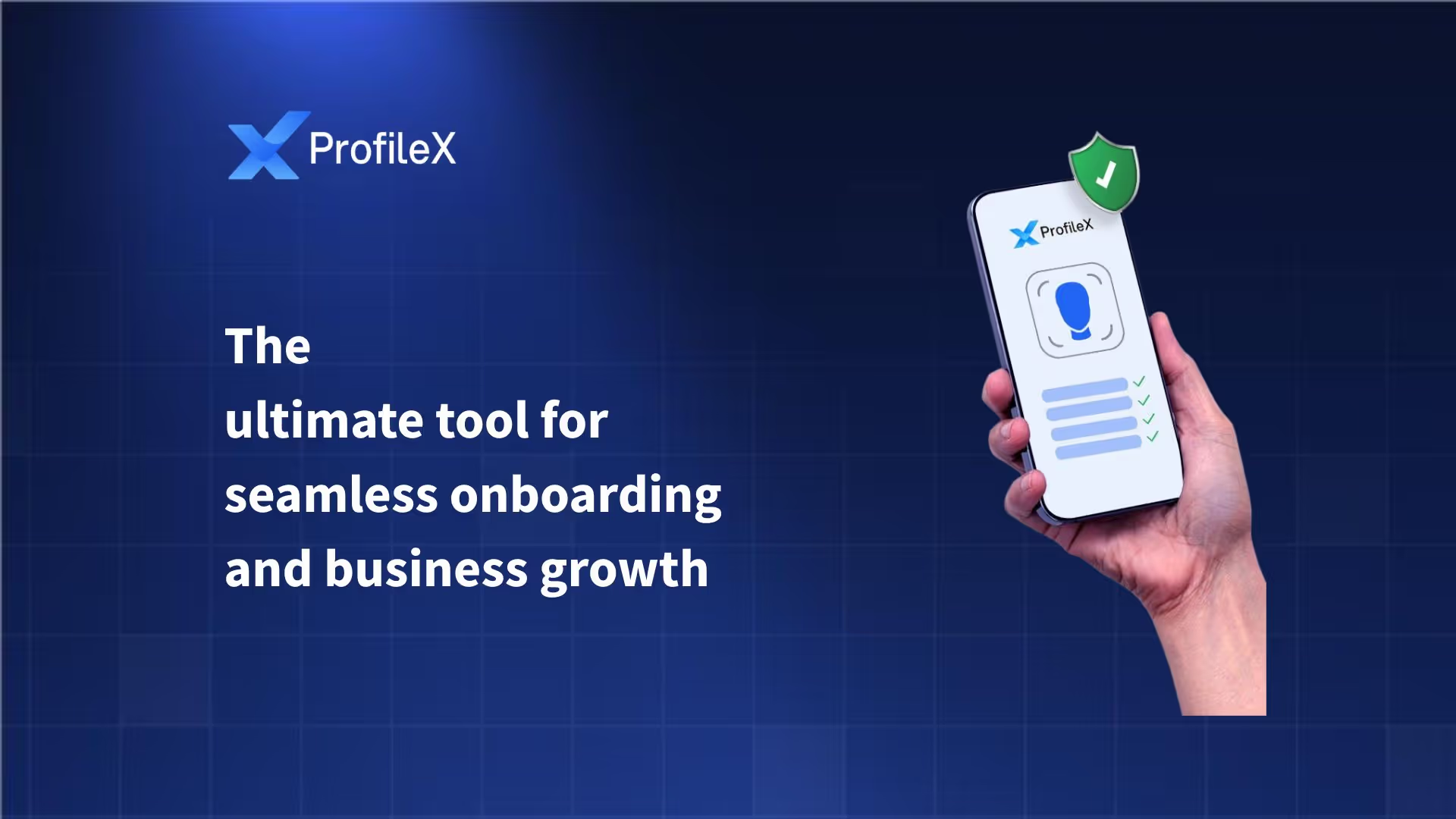Have you ever bought something online with just one click or used a ride-sharing app to pay for your trip without pulling out your wallet? If so, you've experienced embedded finance in action.
Embedded finance is revolutionizing the financial landscape by seamlessly integrating financial services into non-financial platforms and applications. This innovation reshapes how businesses and consumers interact with financial products, creating new opportunities and challenges in the digital economy. But what exactly is it, and why should you care? Let’s find out!
What is Embedded Finance?
Embedded finance integrates financial services seamlessly into non-financial products or services, fundamentally changing how we interact with financial products daily. For instance, when you use a ride-sharing app, you're experiencing embedded finance in action - the payment for your ride is processed automatically without needing to take out your wallet or credit card.
This integration goes beyond just payments. Other industries increasingly incorporate various financial solutions into their core offerings. Retailers offer "buy now, pay later" options at checkout, effectively becoming lenders. Software companies provide invoicing and payroll services, taking on roles traditionally held by banks.
As a result, the traditional financial services industry is being reshaped. The need for standalone financial services is decreasing as consumers can access many banking, lending, and insurance products directly through the non-financial platforms they already use and trust.
Essentially, embedded finance enables businesses to integrate financial services closely related to their business:
- Banking services (like checking account balances)
- Lending (getting loans or credit)
- Insurance (protecting your purchases or activities)
- Investing (buying stocks or other financial products)
Instead of requiring users to leave a platform or app to complete a financial transaction, embedded finance brings those solutions directly to where customers are already engaged.
Examples of Embedded Finance
Embedded finance isn't just a fancy term – it's already part of many services you might use daily. Let's look at some examples:
1. Embedded Banking:
Embedded banking involves integrating essential banking services into non-financial platforms. Imagine a freelance platform that lets you manage your earnings and expenses in the app. That's embedded banking. It can include features like virtual accounts, balance checking, and money transfers.
Example: Uber's driver app includes a banking feature that allows drivers to open an account, receive payments, and manage their earnings directly within the app.
2. Embedded Payments
This is the most ubiquitous form of embedded finance. It allows customers to make purchases or transfers without leaving the platform they're using.
Example: Consider how easy it is to pay for an Uber ride. The payment happens automatically at the end of your trip – that's embedded payments in action. Another example is Amazon's one-click purchase option, which uses stored payment information to make buying quick and easy.
3. Branded Payment Systems
These are payment solutions co-branded between a non-financial company and a financial institution.
Example: The Apple Card, created in partnership with Goldman Sachs, is deeply integrated with Apple's ecosystem. It offers features like instant cashback and spending tracking directly in the Apple Wallet app, blending financial services with Apple's user experience.
4. Embedded Lending
This involves offering credit or loans at the point of sale, often in e-commerce settings.
Example: Klarna's "buy now, pay later" option, which allows shoppers to split payments into installments directly at checkout on partner websites.
5. Embedded Investing
Investment services integrated into non-financial platforms, allowing users to invest in stocks, bonds, or other financial instruments.
Example: Robinhood's API allows third-party apps to offer stock trading features directly within their platforms.
6. Embedded Insurance
Insurance products offered at the point of sale for relevant purchases.
Example: Tesla offers car insurance as part of the vehicle purchase process, using data from the car to determine premiums. Some car-sharing apps provide insurance as part of the rental process. Another example is how some travel booking sites offer travel insurance as part of the booking process.
What are the Key Components of Embedded Finance
Here are the critical components of embedded finance:
APIs (Application Programming Interfaces):
These are the technological backbone of embedded finance. Think of APIs as digital bridges that allow software systems to talk to each other. They facilitate the connection of a non-finance app with financial services. For instance, a payment API might allow an e-commerce site to process credit card transactions without building the entire payment infrastructure.
Open Banking Infrastructure:
This framework secures financial data sharing between different institutions, facilitating the integration of various financial services. For example, a ride-sharing app could use open banking APIs to connect directly with a user's bank account, allowing seamless payments without needing a separate payment processor. The app could also offer instant cash advances to drivers based on their earnings history, all within the same platform they use for their daily work.
Regulatory Compliance Frameworks:
Robust compliance measures are crucial to ensure legal and ethical operations. For example, a social media platform integrating peer-to-peer payment features must implement Know Your Customer (KYC) and Anti-Money Laundering (AML) checks. This might involve verifying users' identities through document uploads and automated background checks before allowing them to send or receive money, ensuring compliance with financial regulations while maintaining a seamless user experience within the app.
Data Analytics and AI:
These technologies enable personalized financial services and risk assessment, enhancing the user experience and improving decision-making processes.
Data Security and Privacy Measures:
Robust security protocols are crucial to protect sensitive financial information.
Embedded finance differs from traditional financial services in several key ways:
- Contextual Integration: Financial services are woven into the user's existing journey rather than being a separate, standalone service.
- Seamless User Experience: Customers can access financial services without leaving their preferred platform or app.
- Non-Financial Brand Relationships: Users interact with financial services through brands they already know and trust, even if those brands aren't traditional financial institutions.
- Data-Driven Personalization: Embedded finance can offer more tailored financial products and services by leveraging user data from the host platform.
How Embedded Finance Works
The mechanics of embedded finance rely on a complex interplay of technology, partnerships, and regulatory compliance. Here's a breakdown of how it typically functions:
- Technical Infrastructure: A robust API infrastructure is at the core of embedded finance. These APIs bridge the host platform (e.g., an e-commerce site) and financial service providers (e.g., payment processors and banks).
- Integration Process: The host platform integrates these APIs into its existing systems, allowing it to offer financial services seamlessly within its user interface.
- Data Exchange: When a user initiates a financial action (like making a payment), the host platform's system communicates with the financial service provider's system via the API, exchanging necessary data in real-time.
- Regulatory Compliance: Throughout this process, all parties must adhere to relevant financial regulations and data protection laws. This often involves Know Your Customer (KYC) checks, anti-money laundering (AML) procedures, and secure data handling practices.
- User Experience: From the user's perspective, this process happens seamlessly within the host platform's interface, often requiring just a few clicks to complete a financial transaction.
When you use an embedded finance service, all of this tech and teamwork come together to give you a smooth, easy experience. You might not see all the complex stuff happening in the background, but it's there, making everything work seamlessly.
Key Players in the Embedded Finance Ecosystem
Understanding the key players in the embedded finance ecosystem is crucial to grasping how this innovative approach to financial services operates:
1. Digital Platforms:
These companies integrate financial services into their existing offerings. They can be from various sectors:
- E-commerce platforms (e.g., Amazon, Shopify)
- Ride-sharing apps (e.g., Uber, Lyft)
- Social media companies (e.g., Facebook, WeChat)
These platforms leverage embedded finance to enhance user experience, increase customer loyalty, and create new revenue streams.
2. Financial Institutions:
Traditional banks and fintech companies are crucial in the embedded finance ecosystem. They provide the underlying economic infrastructure and often hold the necessary regulatory licenses. Some are adapting their business models to become "Banking-as-a-Service" (BaaS) providers, offering their banking capabilities via APIs for other companies to embed.
Examples: Goldman Sachs, BBVA, Green Dot
3. Embedded Finance Infrastructure Companies:
These specialized firms, like Neokred, provide the technological backbone enabling businesses to integrate financial services seamlessly. They offer:
- API integration capabilities
- Compliance and risk management tools
- Data analytics and reporting features
- White-label solutions for various financial products
Example: Neokred is a leading embedded finance infrastructure provider that enables businesses to seamlessly integrate financial services through robust API solutions, compliance tools, and data analytics. Their customizable white-label offerings accelerate time-to-market, enhance customer experiences, and ensure regulatory adherence, making them an invaluable partner in the evolving financial landscape.
Pros and Cons of Embedded Finance
Like any technological innovation, embedded finance comes with its own set of advantages and challenges:
Benefits:
- New Revenue Streams for Businesses: Companies can offer financial services without becoming entire banks, opening up new income sources.
- Enhanced Data Insights: Businesses can learn more about their customers' financial behaviors and preferences, enabling them to create more targeted marketing campaigns and develop new products that better meet customer needs. For instance, a retailer offering embedded payments could analyze purchase patterns to optimize inventory and create personalized promotions.
- Improved Customer Experience: Financial services become more seamless when built into platforms we use. 6 in 10 consumers want to transact with financial institutions that provide a single platform, such as social media or mobile banking apps. This demonstrates the rising acceptance and reliance on fintech solutions globally, indicating that consumers are increasingly integrating these services into their daily financial activities.
- Increased Financial Inclusion: People who might not use traditional banks can access financial services through familiar apps.
- Faster Innovation: New financial products can be developed and launched more quickly. This is possible because embedded finance platforms often use modular, API-based architectures. For example, a company could rapidly deploy a new lending product by integrating a third-party credit scoring API with its existing payment system rather than building the entire infrastructure from scratch.
Drawbacks:
- Regulatory Challenges: Companies must navigate complex financial regulations, which can be difficult for non-financial firms.
- Data Privacy Concerns: More sharing of financial data raises questions about security and privacy.
- Potential for Market Concentration: There's a risk that a few large platforms could dominate the space.
- Blurred Lines of Responsibility: When issues arise, it may not always be clear who is responsible—the platform or the financial service provider.
- Cybersecurity Risks: More integrated financial services could mean more potential targets for cybercriminals.
- Customer Trust Issues: Some people may hesitate to use financial services from non-traditional providers.
Comparison with Related Concepts
It helps to compare embedded finance with similar ideas in the financial world to get a clearer picture.
Embedded Finance vs. Open Banking
Let's look at how embedded finance stacks up against open banking. Both of these concepts involve bringing financial services closer to consumers, but they work in different ways:
- Open Banking is about banks sharing your financial data with other companies, with your permission. This helps create new services and increases competition among banks. Consider opening up the banks' data vaults to let other companies peek inside.
- Embedded Finance takes things a step further. It allows non-financial companies to offer financial services directly to the customer. It's like your favorite coffee shop app suddenly offering you a savings account or loan.
Open banking enables embedded finance, providing the data-sharing infrastructure that makes many embedded finance applications possible.
Embedded Finance vs. DeFi (Decentralized Finance)
Embedded finance and DeFi both seek to increase accessibility to financial services, but their techniques differ:
- Embedded Finance integrates typical banking services into non-financial platforms.
- DeFi uses blockchain technology to provide financial services without the need for centralized middlemen, frequently operating outside of established banking rules.
While embedded finance works to improve current financial services, DeFi aspires to establish whole new financial paradigms.
The Embedded Finance Market
The embedded finance market is experiencing explosive growth, with some projections suggesting it could reach $7 trillion in transaction value by 2026. Several factors are driving this growth:
- Increasing Digitalization: As more aspects of our lives move online, the demand for integrated digital financial services grows.
- Changing Consumer Expectations: Users now expect seamless, one-stop experiences in all their digital interactions, including financial services.
- Advancements in API Technology: Improved API capabilities make it easier and more secure to integrate financial services into various platforms.
- Regulatory Changes: Open banking initiatives in various countries have created a more favorable environment for embedded finance.
- COVID-19 Impact: The pandemic has accelerated digital adoption, including in financial services, boosting the embedded finance market.
Key market segments showing significant growth include:
- Embedded payments in e-commerce
- Integrated insurance offerings
- Embedded lending in various sectors
- Integrated investment services
The Future of Embedded Finance
As we look to the future, several trends and innovations are likely to shape the evolution of embedded finance:
- AI and Machine Learning: These technologies will enable more personalized financial services and better risk assessment. For example, an AI-powered budgeting app could analyze spending patterns and automatically adjust savings goals or suggest investment opportunities.
- Blockchain and Cryptocurrencies: We may see increased integration of blockchain-based financial services into traditional platforms. For instance, a social media platform could implement a blockchain-based loyalty point system, allowing users to earn, trade, and redeem tokens for real-world goods or services across multiple partnered businesses.
- Internet of Things (IoT): As more devices connect, we can see financial services embedded into a broader range of products and services. For example, smartwatches and fitness trackers could integrate with health insurance platforms, allowing users to earn discounts or rewards based on their activity levels and health metrics. This real-time data sharing could lead to more personalized insurance premiums and incentivize healthier lifestyles.
- Hyper-Personalization: Advanced data analytics will allow highly tailored financial products based on user behavior and needs. For example, a fitness app could offer personalized health insurance premiums that adjust in real-time based on activity levels and health metrics.
- Expansion into New Sectors: Embedded finance will likely penetrate more industries, from healthcare to education to government services. For instance, a university app might offer student loans or payment plans directly integrated with course registration.
- Regulatory Evolution: As embedded finance grows, we can expect regulatory frameworks to evolve to address new challenges and opportunities. We might see the emergence of specialized "embedded finance" licenses or new data protection laws tailored to integrated financial services' unique risks.
The rise of embedded finance will likely have significant implications for traditional financial institutions. Banks and other financial service providers may need to adapt their business models, potentially focusing more on becoming backend financial infrastructure providers rather than consumer-facing brands.
Conclusion
Embedded finance is revolutionizing how we interact with financial services, seamlessly integrating them into our digital experiences. For businesses, it offers new revenue streams and deeper customer relationships. For consumers, it brings unprecedented convenience and personalization. However, challenges around regulation, data privacy, and market competition remain. As embedded finance evolves, it will reshape our relationship with money, making financial services more accessible and integrated into our lives. Understanding and adapting to this trend will be crucial whether you're a business leader, innovator, or consumer. The future of finance is embedded, and it's set to transform how we think about and use money in the digital age.





